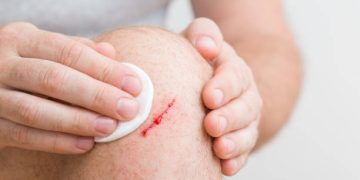Diagnosis of Cuts Diagnosis of cuts is usually straightforward and based on physical examination. Most cuts can be assessed visually, but deeper or more complex wounds may require further evaluation. The goal is to determine the extent of tissue damage, risk of infection, and whether medical intervention such as stitches or antibiotics is needed. Initial Examination When a person presents with a cut, healthcare professionals will assess: Location of the wound and surrounding structures (e.g. joints, tendons, nerves) Size and depth: Surface cuts may be small and shallow, while deep lacerations can reach underlying tissues Bleeding rate: Persistent bleeding may indicate arterial damage Signs of contamination: Dirt, debris, or foreign objects in the wound Signs of infection, especially if the cut is older or improperly cleaned Wounds on the face, hands, genitals, or over joints often require closer attention due to cosmetic and functional concerns. Tetanus Risk Assessment | Diagnosis of Cuts Doctors will ask about the patient’s tetanus vaccination status, especially if the wound was caused by: Rusty metal Animal bites or scratches Soil-contaminated tools A tetanus booster may be administered if the wound is high-risk and the patient hasn’t had a booster within the last 5 to 10 years. Functional Testing For cuts over joints or tendons: Range of motion tests may be performed to check for damage Sensation checks help identify nerve involvement Loss of movement or feeling may indicate deeper injuries that need surgical repair. Imaging Studies Although rare for standard cuts, X-rays or ultrasounds may be used if: A foreign body is suspected (e.g. glass or metal fragment) There’s concern about bone involvement or fractures beneath the wound In some trauma settings, a CT scan may be used to assess complex lacerations or multiple injuries. Wound Classification Wounds are often classified based on: Clean vs contaminated Simple vs complex Superficial vs deep This classification guides the treatment plan, including the need for stitches, antibiotics, or surgical intervention. In summary, diagnosis of cuts involves assessing wound severity, risk of infection, and potential underlying damage. Quick and accurate evaluation ensures appropriate treatment and prevents long-term complications. [Next: Treatment of Cuts →]
